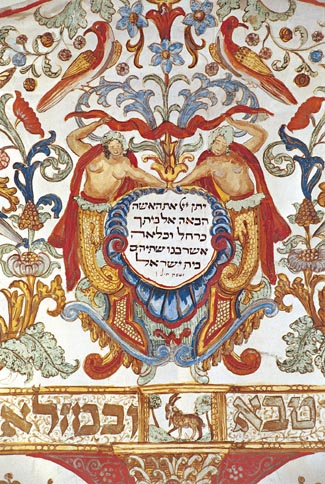When the directors of San Francisco's Museo ItaloAmericano decided to create an exhibit about Italian Jewish life in the age of the Ghetto (16th-19th centuries), the first thing they did was a Google search on the topic.
What they found was UC Santa Cruz professor of English and comparative literature, Murray Baumgarten.
Professor Baumgarten is director of the Jewish Studies program at UC Santa Cruz. Over the past several years, he has directed two summer institutes on that very topic at the site of the first ghetto in Venice, Italy-in collaboration with the University of Venice and funded with grants from the National Endowment for the Humanities.
The result is an exhibition now at the Museo ItaloAmericano through Feb 15 titled Il Ghetto: Forging Italian Jewish Identities 1516-1870 that looks at more than 350 years of Jewish life in Italy-the gateway through which Jewish culture in Europe was established.
"I was the academic resource and consultant, and worked extensively with the curator to develop the exhibit," said Baumgarten. "It's a very unusual exhibit exploring what it was like for those Jews, the first people in the ghetto in Italy."
Baumgarten noted that the word "ghetto" actually originated in Venice in the 16th century. "The ghetto was the name of the place where they threw junk from foundries-it was basically a garbage dump-so they put the Jews in it," he said.
"What I tried to do-with both the Venice Institute and the San Francisco exhibit-is to create portals into history and culture," Baumgarten added. "The portals are there to allow people to experience in some way, the daily life of a people who were controlled and defined by other people who considered them as aliens--literally not quite human."
The exhibit includes unique artifacts as well as images from more than 40 sources in Italy, Israel, and throughout the United States, including the Archivio di Stato of Venice, the Museo de Roma, and the Galleria degli Uffizi of Florence. It also features ceramics that illustrate Jewish Italian life on loan from the Fine Arts Museums of San Francisco.
In tandem with the exhibit, Baumgarten is also coordinating a symposium featuring an international lineup of scholars in Italian Jewish history and culture, January 24-26, in both San Francisco and at UC Santa Cruz. The event begins in San Francisco on Saturday evening with an opening concert of Baroque music at the Museo ItaloAmericano, followed by the Sunday symposium at the museum from 10 a.m. to 4 p.m.
Baumgarten will moderate the final day of the symposium at UC Santa Cruz on Jan. 26, from 10:30 a.m. to 6:30 p.m. The UCSC event is free and open to the public.
Baumgarten speculated that the exhibit might travel to Los Angeles, Chicago, and New York after it closes on February 15. But he insisted that it run in San Francisco until at least February.
"I'm teaching an undergraduate class at UC Santa Cruz this winter quarter titled "Jewish Writers and the European City-Venice," Baumgarten noted. "So I made sure that the exhibit ran through February so my students could go!"
For more information about the exhibit and symposium, contact Professor Baumgarten at (831) 459-1225. For information about all events at the Museo ItaloAmericano (Building C, Fort Mason Center, San Francisco), call (415) 673-2200 or go to Museo.



